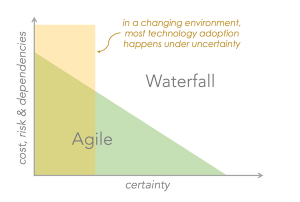Performance evaluations are the best way to identify the strengths and opportunities for improvement presented by the employees of an organization. They are also an instrument to promote meritocracy and facilitate administrative decision-making such as distribution of bonuses, salary increases, reassignment of positions, among others.
A performance evaluation can include both the management of job competencies and the monitoring of the fulfilment of the expected goals. The objective is to trace the performance of employees over time and find the best methods to close the gaps and optimize global and individual productivity in the company.
Human talent is the most important asset of an organization. Employees are the vital element to meet the proposed goals. For this reason, evaluating their performance, giving them feedback and arranging development plans that allow taking advantage of opportunities for improvement is essential for the growth and competitiveness of the company in the market.
However, a performance evaluation needs to be prepared with dedication to obtain true, sustainable results that allow a true monitoring of the performance of those involved.
Today, I want to give you 5 tips to design and implement a successful and truly productive performance evaluation. Let’s get started:
1. Structure the organization chart of the company:
The organization chart of the company is the map that allows clarifying the labor relations that exist between the members of the company, including bosses, colleagues and collaborators.
The purpose of the organization chart is to prevent people who do not know others or whose work is unrelated to being evaluated and miss out on the opportunity for real results.
2. Determine the positions and functions:
To carry out an effective performance evaluation, it is necessary to categorize each of the existing positions in the company, determine what are the requirements and basic functions that are required to perform them and establish the responsibilities and ways of delivering the results that are expected of each one of them. This information will make it possible to assign the goals and competencies corresponding to each collaborator included in the evaluation.
3. Choose the evaluation methodology:
Performance reviews can be 90, 180, 270, or 360 degrees. The first includes only the participation of the boss; the second includes the boss and colleagues; the third to the boss, colleagues and collaborators and the last to all the above and the self-evaluation.
The combinations of evaluators for each position may vary according to the company’s criteria, but the important thing is to choose the one that allows you to obtain the best picture of the employee’s performance, leadership assessment and explain it to those involved before applying the process.
4. Prepare feedback:
It is useless to carry out a performance evaluation process if there is no subsequent conversation to communicate and discuss the results obtained.
Feedback is a great opportunity to assess the work of employees, help them in their professional development and discuss with them the reasons why there are failures in their functions.
This makes it possible to strengthen the relationship between the company and the employees, in addition to demonstrating that the evaluation is really important and that the results will not be forgotten.
5. Establish a Development Plan:
After providing the feedback and evaluating the results, the next step is to define an Individual Development Plan (PID) that allows taking advantage of the identified improvement opportunities and closing the gaps. The objective of the plan is to assign the tasks to optimize performance and to strictly monitor their fulfilment.
Finally, it is advisable to establish a schedule with the periodicity of the evaluations. The value of conducting a performance evaluation is in being able to compare the results over time. A semi-annual evaluation is the most appropriate to establish a framework that allows to verify progress and setbacks in labor competencies, the fulfilment of goals and, if applicable, the performance of the activities defined in the Individual Development Plan.
Conclusion
This evaluation process allows each employee to understand the degree of competitiveness they have in their work and to understand how they are seen and valued by others, bosses, colleagues, subordinates, in the performance of their duties.
Evaluation is quite effective since it provides points of view that collaborators often do not see when evaluating their work.
When the evaluation is made from a single point of view, from the CEO or the division head for example, wrong personal perceptions, ignorance of the employee’s work or biased points of view that do not really contribute to consolidate a robust evaluation may occur and objective, and that is precisely what the 360-degree competency assessment seeks to avoid.
The evaluation provides employees with the necessary information about the skills, behaviours and competencies that the organization requires to carry out the organizational strategy.
The result of the evaluation makes it clear to the employee their strengths, their weaknesses, which should become opportunities for improvement, and the degree of development of their competencies to achieve their professional objectives in the company.
Business & Finance Articles on Business 2 Community
(31)
Report Post





